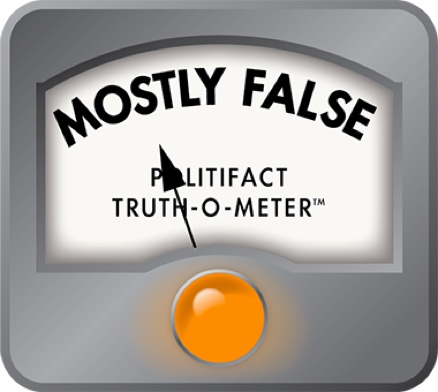
Vice President JD Vance hit the road Aug. 21 to promote President Donald Trump’s legislative accomplishment, the One Big Beautiful Bill Act tax and spending bill.
The law permanently extended tax cuts from a 2017 law Trump signed, which would have expired at the end of 2025 had Congress not reauthorized them. The law also included some new tax cuts, including for tips, overtime and Americans 65 and older.
Speaking in Peachtree City near Atlanta, Vance said, “We had the biggest tax cut for families that this country has ever seen.”
The tax cuts were significant, but they weren’t the biggest in U.S. history — which was a phrase Trump has often used to inaccurately describe his 2017 tax cut law. The 2025 tax cuts rank either third-biggest since 1980 or tied for seventh, depending on the yardstick.
At the same time, many Americans could see relatively modest changes to the taxes they owe starting in 2026, because the 2025 law mostly extended existing tax cuts.
Sign up for PolitiFact texts
The White House did not provide a response before publication.
Comparing historical tax cut laws
We examined the tax revenue decreases from major laws passed since 1980. (On balance, most tax laws prior to 1980 either raised taxes or cut them modestly.)
Tax bill dollar amounts tend to rise over time because of inflation, so we looked at tax cuts as a percentage of gross domestic product, which evens out the differences over time. And because some early laws have tax cut data available only for the first five or six years of the law’s life, we compared laws by looking at the cumulative tax savings during a law’s first five years in effect.
We found that the law with the biggest tax savings was 1981 legislation passed by the Democratic Congress and signed by President Ronald Reagan, who won office promising large tax cuts. That law cut taxes by 3.5% of the nation’s cumulative five-year GDP.
A 2012 bill passed by the Republican Congress and signed by President Barack Obama ranked second. That bill, which cut taxes by 1.7% of GDP, extended the tax cuts passed in 2003 under President George W. Bush.
Based on current projections, Trump’s 2025 law ranks third at 1.4% of GDP when factoring in Trump’s 2017 cuts.
Trump’s 2017 law ranks fourth at 1%, tied with a 2010 law Obama signed that extended Bush’s 2001 tax cuts. Bush’s 2001 and 2003 tax cuts ranked sixth and seventh, with 0.7% and 0.5, respectively.
If considering only new tax cuts and not the reupped 2017 tax cuts, then Trump’s 2025 law would tie for seventh at 0.5% of GDP.
Joseph Rosenberg, a senior fellow at the Urban Institute-Brookings Institution Tax Policy Center, told PolitiFact that it’s legitimate to measure the scale of the cuts in the 2025 tax law either way.
What will ordinary Americans see in their taxes starting in 2026?
There could be a disconnect between the historical scale of Trump’s 2025 bill and the impact that ordinary Americans will notice when filing 2026 taxes.
Because Americans are already paying the lower rates that began in 2017 and that the 2025 law extended, they won’t necessarily notice a sizable reduction in taxes owed.
“For most families, they are going to see a child tax credit that increases by a maximum of $200 per child — from $2,000 to $2,200,” said Margot Crandall-Hollick, principal research associate at the Tax Policy Center. “Some are going to pay a little less because of the tips and overtime provisions and a slightly higher standard deduction.”
The law preserves a more generous standard deduction that had been set to expire and increases it slightly to $15,750 for single filers and $31,500 for joint filers in 2025, to be indexed to inflation annually.
At the same time, Crandall-Hollick said, some families, especially those with lower incomes, will pay higher taxes because of the expiration of health insurance premium tax credits, which were not extended by the Big Beautiful Bill.
Our ruling
Vance said, “We had the biggest tax cut for families that this country has ever seen.”
When factoring in the One Big Beautiful Bill’s extension of 2017 tax cuts, then the tax savings from Trump’s 2025 law rank third among tax cut laws since 1980, following bills signed in 1981 by Reagan in 1981 and in 2012 by Obama.
However, the bottom-line impact on Americans’ tax liability starting in 2026 won’t be as dramatic as the historical tables suggest. Americans are already paying the lower tax rates that began in 2017 and the 2025 law saved from expiration.
The primary reductions taxpayers will see from the 2025 law will be from new, more limited tax breaks, such as for income from tips and overtime and for Americans 65 and older.
The statement contains an element of truth but ignores critical facts that would give a different impression. We rate it Mostly False.
